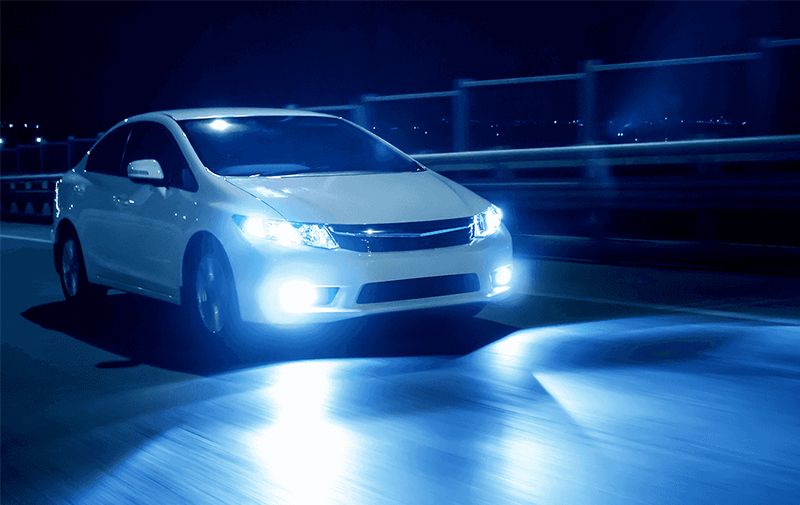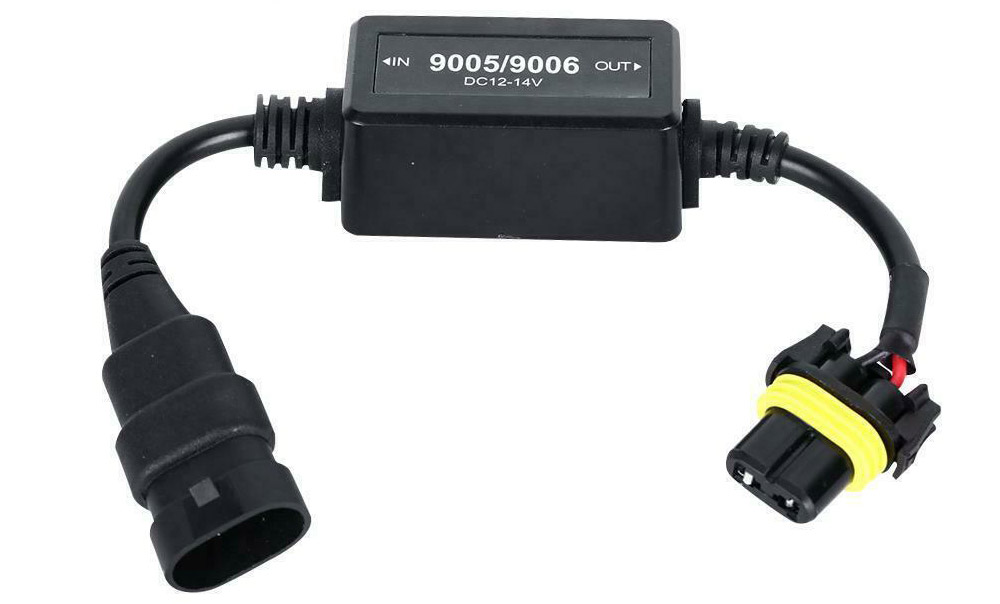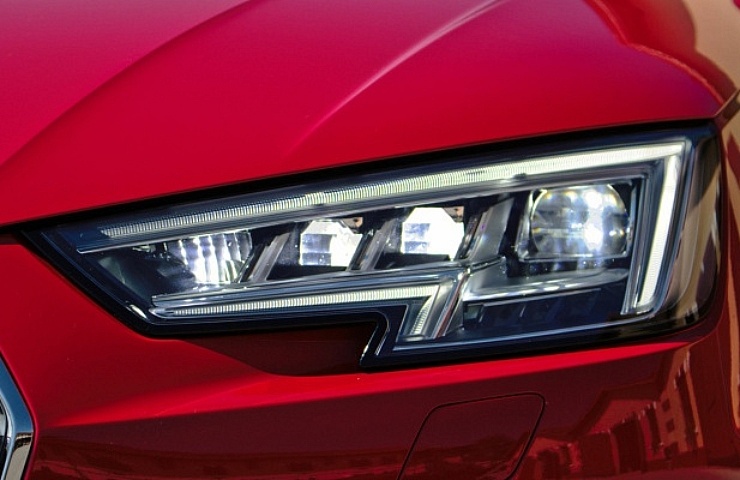Contents
LED headlights have been gaining market share despite being more expensive than the halogen headlights that had recently dominated the market. The technology was introduced to US cars in 2007. By 2019, it had become standard equipment in more than 80 percent of our vehicles. That’s because LED vehicle lighting is brighter and more energy efficient than halogen lamps.
It’s one thing to replace one LED bulb with a new one. But there are real safety concerns with upgrading to LEDs and other brighter lights.
See our guide to all types of headlights: HID, Xenon, and LED.
How LED Car Lighting Works
LED auto lights (which are also employed for taillights) are high-tech. They use a pair of semiconductors on a microchip. When the semiconductors have electric charges applied to them, atoms swirl and combine to produce light energy.
Eighty percent of the energy LEDs use is converted into light. The 20 percent of wasted energy compares very favorably to the 40 percent lost in xenon lights, and 80 percent from halogen bulbs. The light is also warmer, at 6,000 kelvin on the blue scale compared to 4,000 kelvin for xenon. LEDs can also be turned on and off quickly, which aids their use in auto-dimming applications.

Cougar Motor LED lights
There are many “plug and play” solutions with bulbs that fit into your existing housing. The Philips Lumiled Luxeon ZES LED is highly rated. It’s the same bulb fitted to new BMW and Audi models. Cougar Motor provides another top-rated conversion kit.
How to Fix Flickering LED Headlights
One advantage of LED headlights on cars—energy efficiency—is also a challenge for motorists who upgrade. There are reports that new lights flicker or cause annoying pop-up messages such as “check low beam.”
The problem with fast-clicking taillights is generally related to the fact that LED lamps draw so little power that the car thinks the bulb isn’t working. The flickering is meant to be a warning to the motorist about swapping in new lights.

Anti-flicker error, resistor-relay adapter
The problem is often your car’s computer (built for halogen or xenon) trying to communicate with unfamiliar technology. An inconsistent supply of AC power is another reason for this issue, as is a dimmer switch used in incandescent bulbs. Search for a product’s compatibility charts if you want to make sure an LED is appropriate for your vehicle. Regardless, the problem is solvable.
So-called error cancelers and anti-flicker adaptors are inexpensive and easy to install. The best thing about converting to LED headlights on cars is that you can probably do the work yourself in a few minutes. Consult your owner’s manual about replacing headlight bulbs. If that fails, YouTube has tons of helpful videos.
Do You Need to Aim LED Headlights?
Once you install LED headlights, you need to aim them for maximum effectiveness. It’s a straightforward process.
The bulb simply plugs in, but it may not be optimized for the best beam pattern. There are holes for horizontal and vertical adjustment, using an Allen key or a Phillips-head screwdriver to adjust the bulb. Here’s the procedure:
- Park on level ground with the car as close as possible to a blank wall. Turn on the low beams.
- Use horizontal strips of tape to mark the left and right centers where the light beam is most intense.
- Run a piece of tape vertically to mark the intersection of the two. That’s the center of the light.
- Next, back the car up 25 feet. Block one of the headlights and look where the other one lines up with the marks on the wall.
Use the adjusters, a quarter turn at a time. According to Popular Mechanics:
For vertical aim, the top of the most intense part of the beam should be at or below the centerline of your horizontal tape line. For horizontal aim, the most intense part of the beam should be to the right of the vertical tapeline.
This is so you don’t blind oncoming traffic, and so you can see the side of the road and any people, animals, or things that might pop out into your path.
If all this sounds like too much work, have your mechanic do the deed.
Long-Lasting LED
The good news is that once you install and aim your car’s LED head lamps, it’s unlikely you’re going to have to replace the bulbs anytime soon. Under ideal conditions, LEDs will last up to 50,000 working hours, though weather, temperature, and usage will affect that. With 50,000 hours, the bulbs could be on 12 hours a day and still last 11.4 years.
Again, we recommend that you read about LED safety concerns and our guide to all types of headlights: HID, Xenon, and LED.





